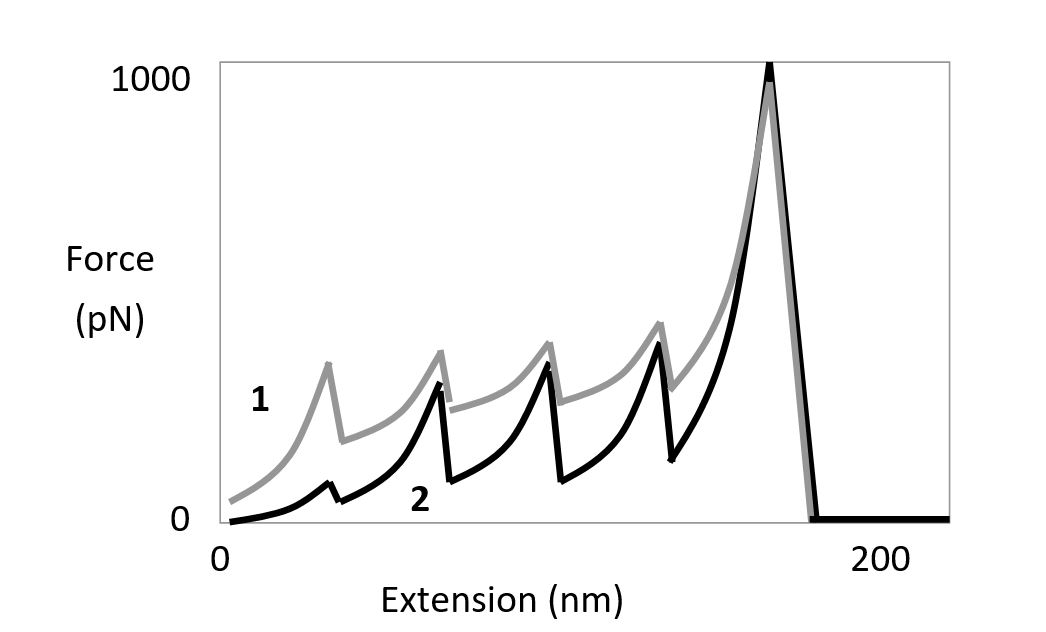Question 28
(Short Answer)
Atomic force microscopy (AFM) is used in an experiment to unfold a multidomain protein by applying mechanical force. The protein contains several copies of an immunoglobulin domain that are unfolded one by one as the two ends of the molecule (one attached to a cover slip, and the other to the AFM tip) are being pulled apart, resulting in the "sawtooth" force-extension curves shown below. The same experiment is done twice, once in the presence and once in the absence of a chaperone protein that stabilizes the immunoglobulin domains. Answer the following questions based on this graph.

-According to the force-extension graph, which curve (1 or 2) would you expect to correspond to the reaction in the presence of the chaperone protein? Write down 1 or 2 as your answer.
Answer
The force required to unfold ...
View full Answer